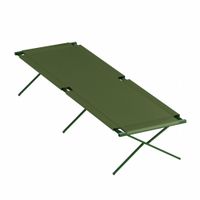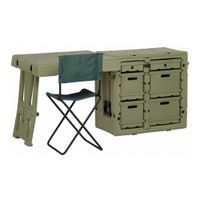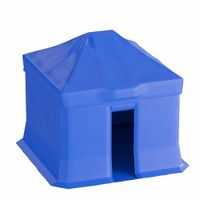Call +(254) 703 030 000 / 751 483 999 / 721 704 777
- Home
- Safety
- Emergency Preparedness Products
- Temporary Emergency Shelters Incident Command Supplies
.....Read More
Frequently Asked Questions
What are temporary emergency shelters and how do they function?
Temporary emergency shelters are facilities established to provide immediate, short-term housing and support to individuals and families displaced by emergencies such as natural disasters, conflicts, or other crises. These shelters are designed to offer safety, protection, and basic necessities until more permanent solutions can be arranged.
Functioning of Temporary Emergency Shelters:
1. **Rapid Deployment**: Shelters are quickly set up in response to an emergency. They can be tents, converted buildings, or modular units, depending on the resources and the nature of the crisis.
2. **Basic Amenities**: They provide essential services such as food, water, sanitation, and medical care. These are crucial for maintaining health and hygiene in the aftermath of a disaster.
3. **Safety and Security**: Shelters offer a secure environment, protecting occupants from further harm and providing a sense of stability amidst chaos.
4. **Coordination with Agencies**: They often operate in collaboration with government bodies, NGOs, and international organizations to ensure efficient resource distribution and management.
5. **Support Services**: Beyond basic needs, shelters may offer psychological support, legal assistance, and help with finding long-term housing solutions.
6. **Community Engagement**: Inhabitants are encouraged to participate in the management and operation of the shelter, fostering a sense of community and empowerment.
7. **Transition Planning**: Efforts are made to transition residents to more permanent housing as soon as possible, minimizing the duration of their stay in temporary conditions.
8. **Adaptability**: Shelters are adaptable to various environments and can be scaled up or down based on the number of people affected and the severity of the situation.
Overall, temporary emergency shelters are a critical component of disaster response, providing immediate relief and a foundation for recovery and rebuilding efforts.
How do incident command supplies aid in emergency response efforts?
Incident command supplies are crucial in streamlining emergency response efforts by providing the necessary tools and resources to manage and coordinate operations effectively. These supplies include communication devices, command boards, identification vests, and documentation materials, which facilitate clear communication and organization among responders.
Communication devices such as radios and satellite phones ensure that all team members can relay information quickly and accurately, reducing the risk of miscommunication. Command boards and planning tools help in visualizing the situation, tracking resources, and planning strategies, enabling responders to make informed decisions swiftly.
Identification vests and badges help in distinguishing roles and responsibilities among personnel, ensuring that everyone knows who is in charge and who to report to, which is vital in maintaining order and efficiency. Documentation materials, including forms and logs, are essential for recording actions, decisions, and resource allocations, providing a clear record for accountability and future analysis.
Additionally, incident command supplies often include first aid kits, personal protective equipment (PPE), and other safety gear to ensure the well-being of responders, allowing them to operate safely in hazardous environments. These supplies also encompass logistical support items like tents, lighting, and power sources, which are necessary for setting up command posts and maintaining operations in the field.
Overall, incident command supplies are integral to establishing a structured and efficient response framework, enabling emergency teams to coordinate efforts, allocate resources effectively, and respond to incidents with agility and precision.
What types of supplies are essential for organizing and coordinating rescue efforts?
Essential supplies for organizing and coordinating rescue efforts include:
1. **Communication Equipment**: Radios, satellite phones, and walkie-talkies ensure reliable communication among rescue teams, command centers, and other agencies.
2. **Medical Supplies**: First aid kits, stretchers, defibrillators, and trauma care supplies are crucial for treating injuries on-site.
3. **Search and Rescue Tools**: Equipment like ropes, harnesses, cutting tools, and thermal imaging cameras aid in locating and rescuing victims.
4. **Transportation**: Vehicles such as ambulances, helicopters, boats, and all-terrain vehicles facilitate quick movement of personnel and victims.
5. **Protective Gear**: Helmets, gloves, boots, and protective clothing safeguard rescuers from hazards.
6. **Lighting and Power Sources**: Portable generators, flashlights, and floodlights are necessary for operations in low-light conditions.
7. **Food and Water**: Non-perishable food items and clean drinking water sustain both victims and rescue personnel.
8. **Shelter and Clothing**: Tents, blankets, and weather-appropriate clothing provide protection against environmental elements.
9. **Mapping and Navigation Tools**: GPS devices, maps, and compasses assist in planning and executing rescue operations.
10. **Documentation and Reporting Tools**: Notebooks, cameras, and digital devices help in recording and reporting the progress and needs of the rescue efforts.
11. **Logistics and Coordination Supplies**: Whiteboards, markers, and planning software aid in organizing and managing resources and personnel.
12. **Safety and Security Equipment**: Barriers, cones, and signage ensure the safety of the site and manage crowd control.
13. **Personal Hygiene Supplies**: Sanitation kits and portable toilets maintain hygiene standards for rescuers and victims.
14. **Rescue Personnel**: Trained professionals, including medics, engineers, and logistics experts, are essential for effective rescue operations.
How do cots, sleeping bags, and bedding contribute to emergency response?
Cots, sleeping bags, and bedding are crucial components in emergency response efforts, providing essential support for affected individuals. These items contribute significantly to the well-being and recovery of people in crisis situations.
Cots offer a stable and elevated sleeping surface, which is particularly important in emergency shelters where the ground may be unsuitable for sleeping due to dampness, cold, or debris. By keeping individuals off the ground, cots help prevent health issues such as hypothermia and provide a sense of personal space and dignity in crowded conditions.
Sleeping bags are vital for warmth and comfort, especially in environments where heating is unavailable or inadequate. They are designed to retain body heat, ensuring that individuals remain warm even in cold conditions. This is crucial for preventing hypothermia and other cold-related health issues. Sleeping bags are also portable and easy to distribute, making them ideal for rapid deployment in emergencies.
Bedding, including blankets and pillows, enhances comfort and provides additional warmth. These items help create a more homely and secure environment, which can be psychologically beneficial for individuals experiencing the stress and trauma of an emergency. Bedding can also be used to create makeshift partitions, offering privacy and a semblance of normalcy in communal living spaces.
Together, cots, sleeping bags, and bedding contribute to the physical and mental well-being of individuals in emergency situations. They ensure that basic human needs for rest, warmth, and comfort are met, which is essential for maintaining health and resilience. By providing these necessities, emergency responders can help stabilize affected populations, allowing them to focus on recovery and rebuilding efforts.
What is the purpose of field desks in emergency situations?
Field desks in emergency situations serve several critical purposes:
1. **Command and Control**: They act as a central hub for coordinating response efforts, allowing leaders to manage resources, personnel, and information effectively.
2. **Communication**: Equipped with communication tools, field desks facilitate real-time information exchange between on-site teams and remote command centers, ensuring that all parties are informed and aligned.
3. **Information Management**: They provide a space for collecting, analyzing, and disseminating data, which is crucial for making informed decisions and adapting strategies as situations evolve.
4. **Resource Allocation**: Field desks help in tracking and distributing resources such as medical supplies, food, and equipment, ensuring that they reach the areas of greatest need.
5. **Situation Awareness**: By maintaining updated maps, reports, and other situational data, field desks enhance the understanding of the emergency landscape, aiding in strategic planning and risk assessment.
6. **Coordination with Agencies**: They facilitate collaboration between various agencies and organizations involved in the response, ensuring a unified and efficient approach.
7. **Documentation and Reporting**: Field desks are responsible for maintaining records of actions taken, resources used, and outcomes achieved, which are essential for accountability and post-event analysis.
8. **Public Information**: They serve as a point of contact for disseminating information to the public and media, helping to manage public perception and provide safety instructions.
9. **Logistical Support**: Field desks organize the logistics of personnel movement, shelter arrangements, and other operational needs, ensuring that responders can focus on their tasks.
10. **Safety and Security**: They monitor the safety of responders and affected populations, implementing measures to mitigate risks and protect lives.
Overall, field desks are vital for ensuring a structured, efficient, and effective response to emergencies, minimizing chaos and maximizing the impact of relief efforts.
How are emergency identification cards used during emergencies?
Emergency identification cards are crucial tools during emergencies, serving multiple functions to ensure safety and efficient management. These cards typically contain essential personal information, such as the holder's name, photograph, contact details, medical conditions, allergies, and emergency contact information.
During emergencies, such as natural disasters, accidents, or medical crises, these cards help first responders and medical personnel quickly identify individuals and access critical health information. This rapid access can be vital for administering appropriate medical care, especially if the individual is unconscious or unable to communicate.
Emergency ID cards also facilitate the reunification process. In chaotic situations, individuals, especially children or the elderly, may become separated from their families. The contact information on the card allows authorities to notify family members or guardians promptly.
For individuals with specific medical needs, such as allergies, diabetes, or heart conditions, these cards can prevent medical errors by informing responders of necessary precautions or treatments. This is particularly important in scenarios where time is of the essence, and there is no opportunity for detailed medical history checks.
In large-scale emergencies, such as evacuations, emergency ID cards can assist in organizing and tracking individuals, ensuring that everyone is accounted for and receives the necessary assistance. They can also serve as temporary identification if official documents are lost or inaccessible.
Overall, emergency identification cards are vital for enhancing personal safety, improving emergency response efficiency, and ensuring that individuals receive appropriate care and support during crises.
What benefits do emergency blankets provide in emergency situations?
Emergency blankets, often made from heat-reflective thin plastic sheeting, provide several critical benefits in emergency situations:
1. **Thermal Insulation**: These blankets are designed to retain body heat by reflecting up to 90% of the user's body heat back to them. This is crucial in preventing hypothermia in cold environments or when a person is wet.
2. **Lightweight and Portable**: Emergency blankets are compact and lightweight, making them easy to carry in emergency kits, backpacks, or vehicles without adding significant weight or bulk.
3. **Weather Protection**: They offer protection against wind and rain, acting as a barrier to prevent the body from losing heat through convection and evaporation.
4. **Versatility**: Beyond warmth, they can be used as ground cover, a makeshift shelter, or a rain poncho. They can also serve as a reflective signal for rescuers due to their shiny surface.
5. **Durability**: Made from materials like Mylar, these blankets are tear-resistant and can withstand harsh conditions, providing reliable protection in emergencies.
6. **Cost-Effective**: Emergency blankets are inexpensive, making them accessible for individuals and organizations to include in emergency preparedness kits.
7. **First Aid Uses**: They can be used to treat shock by keeping the patient warm and preventing further heat loss, which is vital in maintaining circulation and organ function.
8. **Psychological Comfort**: In stressful situations, the physical warmth and protection provided by an emergency blanket can offer psychological comfort and a sense of security.
Overall, emergency blankets are a vital component of emergency preparedness, offering essential protection and versatility in a compact form.





